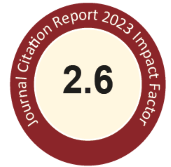Abstract
Antioxidant testing of natural products has attracted increasing interest in recent years, mainly due to the fact that an antioxidant-rich diet might provide health benefits. Activated macrophages are a major source of reactive oxygen species, reactive nitrogen species, and peroxynitrite generated through the so-called respiratory burst. Constitutively released proinflammatory cytokine, especially tumor necrosis factor-α, triggers nuclear factor-κB, and activator protein-1 translocation leading to the over production of reactive oxygen species and reactive nitrogen species in macrophages. Activation of transcription factors in the long-lived tissue-resident macrophages and/or monocyte-derived macrophages, trigger epigenetic modifications leading to the pathogenesis of chronic diseases. Nutraceuticals including lipid raft structure disruption agent, cholesterol depletion agent, farnesyltransferase inhibitor, nuclear factor-κB blocker (α,β-unsaturated carbonyl compounds), glucocorticoid receptor agonist, and peroxisome proliferator-activated receptor-γ agonist have long been used to inactive macrophage. The inhibition effects on the formation of nitric oxide, superoxide, and nitrite peroxide may be responsible for the anti-inflammatory functionalities. Activated macrophage models could be used to identify the active components for functional diets development through a multiple targets strategy. © 2016
ScienceDirect Link
Recommended Citation
Castaneda, O.A.; Lee, S.-C.; Ho, C.-T.; and Huang, T.-C.
(2017)
"Macrophages in oxidative stress and models to evaluate the antioxidant function of dietary natural compounds,"
Journal of Food and Drug Analysis: Vol. 25
:
Iss.
1
, Article 13.
Available at: https://doi.org/10.1016/j.jfda.2016.11.006
Creative Commons License

This work is licensed under a Creative Commons Attribution-Noncommercial-No Derivative Works 4.0 License.
Fulltext URL
https://www.sciencedirect.com/science/article/pii/S1021949816301752/pdfft?md5=7a74714fe96ea5cf30747b55ba883290&pid=1-s2.0-S1021949816301752-main.pdf
Included in
Food Science Commons, Medicinal Chemistry and Pharmaceutics Commons, Pharmacology Commons, Toxicology Commons


Abstract Image